All images courtesy of Bruce Bouillet/Getty Images

By Andrew Daly
andrew@vinylwriter.com
For many, the 80s proved pivotal. To some, it was a decade of overdrive-driven, tip of the hat, presto guitar theatrics. To others, it represents an era where dynamic Charvel-slung heroes paraded up and down the streets of sunny California, with their Frankenstein rigs in tow.
While most remember the vivid technicolor burst of explosive light that was Racer X for its legendary lead guitarist, Paul Gilbert, some may also remember his equally effervescent partner in six-string crime, Bruce Bouillet.
With origins dating back to the chilled air of Midwestern Indiana, Bouillet cut his teeth late night playing several sets per evening while still managing his days as a high school student.
“I would have been around sixteen at the time, and I would be playing the local bars three to four nights a week,” said Bouillet. “I did three sets a night, and my parents were actually pretty lenient about playing until 1 AM on school nights. With that, I was off and running.”
After his high school graduation, the burgeoning star headed west to attend the prestigious GIT, and within days, met a young Paul Gilbert, setting a course for destiny. While Gilbert may have begun as Bouillet’s teacher, the two became fast friends, and in short order, Gilbert asked the young prodigy to join his band, Racer X.
“It wasn’t too long before Paul asked me, ‘Would you be interested in jamming with my band?’ Then he handed me a copy of Street Lethal to learn,” quipped Bouillet.
With one album (Street Lethal) under its belt, Racer X was a band on the rise and had a deal with a hot label, Shrapnel Records. One part pastel dreams, and two parts heavy metal thunder, Racer X entered the studio to record what would become Second Heat, a torrential downpour of guitar badassery.
“By the end of the recording, I could tell it had really come out great and I was relieved because everything had happened so quickly,” said Bouillet. “I also remember thinking, ‘Man, my friends back in Vincennes, IN are going to be blown away.”
Despite its immense talent, success eluded Racer X, and in the wake of Gilbert departing to form supergroup Mr. Big, Racer X eventually turned to cinders, with Bouillet setting course for pasture anew, forming The Scream. Representing something entirely different than Racer X, The Scream’s Hollywood Records debut, Let It Scream, remains an early 90s time-capsule. A torrid snapshot of what might have been, sadly washed away amongst an ever-changing scene.
Present day, Bouillet is stage ready, and ever eager to take on the next challenge that life brings him. Be it heavy metal, production, or instrumental shredding, Bouillet’s imprint on the guitar is forever embossed, if not criminally underexposed.
“My playing is at peak performance and I’m in my best health,” said Bouillet. “So it’s time to get back on the horse and ride.“
Bouillet recently dug in with me for a rare career-spanning interview where we cover the shredder’s long and varied career in rock and metal music.
Andrew:
How have you been holding up over the last year or so? What have you been up to?
Bruce:
Things have been fairly normal for me during the times of COVID. I have been teaching online via Skype for the last seven years, so my daily routine was not affected. If anything, I got busier with more people stuck at home. I also tried putting together a new band with a singer THAT I met through ads I placed. We wrote and demoed a massive amount of songs, but in the end, I couldn’t get it off the ground. So, I shelved that project and have moved on, sort of reflecting on what I really want musically. I still have the desire to write, record, and tour original music.
Andrew:
What first got you hooked on the guitar?
Bruce:
Well, I went to my first concert KISS, Judas Priest, and I knew immediately that I wanted to play guitar. I was just discovering music, and the flood gates opened up. There was so much great music at that time with bands like Black Sabbath, Rush, Cheap Trick, Led Zeppelin, ACϟDC, Van Halen, The Police, and ZZ Top. I remember my parents getting me my first guitar and amp: a Les Paul copy and a Peavy Backstage 30. It was awesome, and I really got down to work trying to figure out songs, etc. The real motivation would be seeing some friends rehearsing in a basement, which pushed me to get good enough to find some players, and put together my first band.
Andrew:
Who were some of your early influences?
Bruce:
All the usual suspects for metal in the early eighties: Ace Frehley, Eddie Van Halen, Randy Rhoads, Alex Lifeson, Gary Moore, John Sykes, Angus and Malcolm Young, Tony Iommi, Neil Schon, Steve Lukather, “Fast” Eddie Clark, Steve Clark, Pete Willis, Dave Murray and Adrian Smith, Glen Tipton, and K.K. Downing, etc. I also had my brother who was playing a lot of stuff like The Clash, The Rolling Stones, Cheap Trick, and The Cramps around the house when we were in high school.
In addition, I had a few older guys in my hometown that were blues players, so I was introduced to a bunch of blues players like B.B. King, Freddy King, and Albert King, as well as Buddy Guy, Johnny Winter, Albert Collins, Stevie Ray Vaughn, etc. There were also a few prog friends that introduced me to Al DiMeola, Steve Morse, and Allan Holdsworth. It was also around this time when the Shrapnel US Metal albums started to show up. Which I had ordered through the mail. I would also have to throw in top-40 radio because in order to play the local bars and clubs you had to play popular music that was on the radio and sneak in your favorite metal songs or originals every few songs. So, pretty diverse as far as music and players go.

Andrew:
Take me through your first meeting with Paul Gilbert and subsequently joining Racer X.
Bruce:
I was fresh off the plane from Indiana, and I was staying at the Hollywood Holiday Inn a couple of blocks from the location of the original GIT above the Hollywood Wax Museum. Being my first day in L.A., I decided to register at MI and put up a flyer looking for a roommate from the school. When I got there, I could see a lot of people going into the P1 performance hall, so I decided to go in. The place was packed, and as luck would have it, the original lineup of Racer X was performing all instrumental versions of the Street Lethal album. I believe this was for Paul, Juan, and Harry’s end-of-year performance credits.
So, I remember asking the kid next to me, “How old is the guitar player?” He said, “Seventeen.” At that moment, I figured everyone in L.A. was younger and way better than me. [Laughs]. When the show ended everyone filed out, and I went straight up to the stage where Paul was winding up his cables and introduced myself. This was when I found out he was going to start teaching at the school. The next day, all the new students were given questionnaires to fill out, and one of the questions was to describe the kind of private counselor they would like to meet with once a week. My answer was, “Tall guy that plays intense metal with advanced alternate picking, sweeping, and two-handed technique.” [Laughs].
The next week I had my first thirty-minute private counseling with Paul. I was once again fortunate to have the last slot at the end of the day. Paul’s apartment was a block past mine, and when we finished I would sometimes walk back with him, so I got to become friends with him. While I was diving into his techniques I found out that I could pull off the majority of the stuff he was showing me. When I would see him for my weekly lesson we started to try them in harmony and it sounded pretty great. Soon after that, Paul asked me to join Racer X, and things progressed quickly from there.
My first rehearsals were at this small detached garage in North Hollywood, and we barely all fit inside. At this time the band lineup was Jeff Martin (vocals), Juan Alderete (bass), Todd DeVito (drums), and Paul on guitar. I wasn’t really ready for a show at this point, so I ran the spotlight for a Racer X show at the Waters Club in Long Beach. A few days after that, Paul called me up and we went to the GIT video lounge, which was basically a big room with a lot of VHS machines and TVs to study videos. He was really excited and kept saying, “You have got to hear this drummer.” He popped in the video and there was Scott Travis live in a club blasting through a drum solo. Well, the next rehearsal at that garage in North Hollywood was with Scott. The next show would be all five of us.
Andrew:
What do you recall regarding the recording of Second Heat?
Bruce:
It was my first album. We ended up at this really amazing studio called Prairie Sun, which is located a little north of San Francisco. It was out in the country on a farm, so there were very few distractions. There were two separate buildings, each of which housed a full studio. There were also a couple of buildings that were guest lodging and the main house. We spent the first three to four days doing pre-production with Mike Varney down in this all-concrete basement of the main house. I remember it being super echoey, really bright sounding, and loud. I couldn’t tell what the hell was going on. Tony McAlpine was finishing recording his second album in studio B, so on breaks, I would sit outside and listen to his solo takes. It was also cool to hear George Lynch play when he showed up to guest on Tony’s album.
Once we finished pre-production, Juan and Scott cut the drums and bass with Paul providing guide guitars and Jeff and I sitting out. I believe most if not all the drum takes were one performance, most were cut without a click and once a drum track was a keeper, Juan would punch in on any bass fixes and we moved on. All drums and bass were cut in a day with the exception of one or two tracks cut the next afternoon. Paul and I then moved on to rhythm guitars. We set up one guitar rig consisting of two early 70s 50-watt Marshalls that were split by a Boss Stereo Chorus Pedal with the chorus turned off, and a Hush IIc, two Marshall 4 x 12 cabs with vintage 30s.
As for guitars, three were used: a vintage 60s Epiphone Wilshire that had been heavily modified by Paul, its pickups had been wired in series and wrapped with aluminum tape. W also used a Pink BC Rich Mockingbird, and a custom Wilshire style guitar made by Wayne Charvel. We would both sit in the control room and hand the guitar back and forth cutting parts. Paul would cut the first rhythm and I would double. Once the first couple of songs had completed rhythm guitars, Jeff would start on vocals during the day, and Paul and I would work on harmony guitar parts and solo spots in the guest cabin, and return to cutting guitars in the evening. Also, Paul would also help out on the vocal recording with suggestions and directions with Jeff.
The final guitar overdubs were the solos and like the cutting of rhythms. We both would sit in the control room and hand the guitar back and forth with Paul cutting first and me harmonizing. These were all done late at night, and with little time wasted. I think I got stuck twice trying to end the solos in “Moonage Daydream,” and “Scarified,” but having Paul there meant that suggestions were always abundant. While the vocals and final guitar dubs were being finalized, the completed tracks were then being mixed in studio B, so it was a real production line. A side note about studio B, at the entrance, there was a big arcade Star Wars game, and it used to randomly say phrases from the movie like, “Use the force, Luke.” [Laughs]. Toward the end, I remember sitting in there and listening to some cassette ruffs of “Moonage Daydream,” “Scarified,” and “Heart of a Lion,” and it was around then that I could hear the near-finished product. The whole Racer X Second Heat album was cut and mixed in just a few days, which was lightning fast compared to any other album I’ve made.
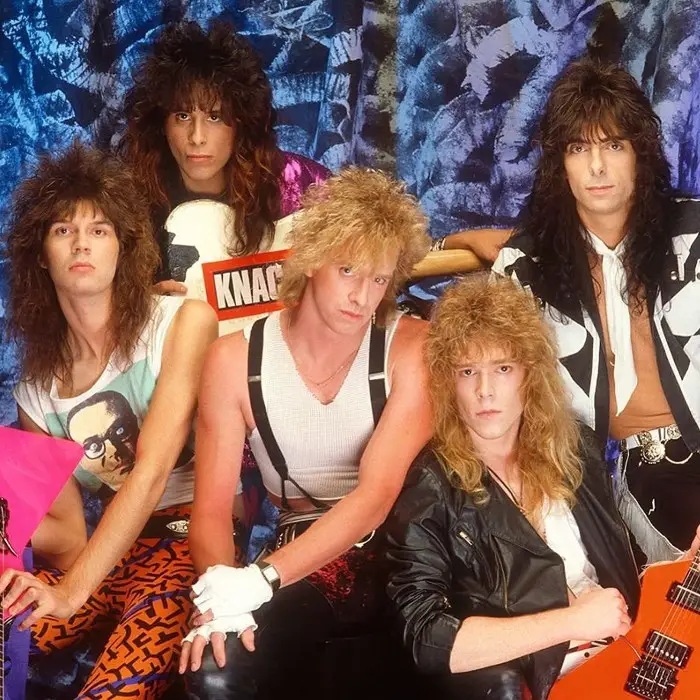
Andrew:
Walk me through the end of your time in Racer X.
Bruce:
The end of Racer X happened very fast. We were selling out good size venues throughout California, but we weren’t getting the bigger labels to come to the table with a deal. We had all the musicianship, talent, and writing skills under one roof, but we had a horrible presentation. We had loud glam colors on our instruments and clothes, and a light-hearted show, and I really believe this overshadowed the potential of the band, especially when it came to the bigger label heads. Ultimately though, the real death of the band was because we had no management. So, when we weren’t getting signed after doing showcases for bigger labels, there was some interband finger pointing and growing frustration., with no management to really say, “Toughen up your presentation and play to your heavier side.”
It was around this time that Mike Varney was behind the scenes connecting the dots with the cast of Mr. Big. Paul finally had a band meeting and said, “I’ve been jamming with Billy Sheehan, and I’m going to leave the band for this new project.” I think we all knew that it was over since Paul was the leader and main riff writer. We ended up playing our final official show at the Omni Theater in Oakland, California. It was probably one of our best shows. The place was sold out and there were fans with these big Racer X banners made from bed sheets. They were hanging from the balcony, and there were fans with signs in the audience. We were up there giving it our all knowing that this was it. We didn’t announce it was over at the show, we just thanked the fans and left the stage. It was a surreal feeling afterward ’cause I was this young guy, and I’m walking off stage while riding this incredible high that was hitting me. Then by the first beer, I was thinking, “This is the last time you will ever play like that with these guys.”
After that, we did a couple of shows with just the four of us in order to fulfill some dates that were already booked. We tried to add another guitarist, but that didn’t progress more than a couple of rehearsals. Paul Gilbert was not easily replaced. We did one last Country Club reunion show with Paul about six months later, but it was a little awkward and not well rehearsed, and that was it. One of the four-piece Racer X shows we did had the bands Roxanne and Angora opening up for us at the Troubadour in Los Angeles. That was the first time for me to see John Corabi live as he was the singer in Angora. On a side note, everyone stayed friends throughout the years. I’ve hung out with everyone at their shows: Mr. Big, Judas Priest, Badlands, Mars Volta, and Marylin Manson.
Andrew:
In the wake of Racer X, The Screamed formed. How did the band come together?
Remember how I mentioned Roxanne? Well, in a weird twist of fate myself, Scott Travis, and Juan Alderete ended up working with Jammie Brown, the singer from Roxanne first. This was to be the original incarnation of The Scream. We wrote “Man In The Moon,” “I Don’t Care,” and a few other tracks that would later be featured on The Scream’s debut, but this lineup failed to really gel. Also at this time, Scott got the Judas Priest gig, so a few weeks later, our manager John Greenberg got me, Juan Alderete, John Corabi, and drummer Walt Woodward III (from Shark Island) together. That would be The Scream lineup that would get signed to Hollywood Records.
Andrew:
The Scream was an entirely different animal than Racer X. How did the sessions for Let It Scream allow you to progress as a player?
Bruce:
The initial blueprint for The Scream was to have a longer song format with a darker blues rock vibe. The first songs written were with singer Jamie Brown, which included “Man In The Moon,” and “I Don’t Care.” To me, this was right on target, as these were five to seven-minute long songs, with plenty of room to stretch out on guitar. When John Corabi entered the picture, the writing changed and things became more about the three-minute song. As a player, I became more aware of the writing and less worried about the solos. The guitar playing overall was a big departure from Racer X, leaning more toward a blues rock 70s sound.
One interesting thing, Eddie and the rest of the band voted that I wasn’t allowed to double my rhythm guitar parts, only one rhythm track per song. To say the least, I was a little bummed out by this decision, but it did challenge me to make one guitar sound full. Listening back now, it sounds pretty massive with just one guitar track. Most of the solos were recorded by myself, my tech, and Garth Richardson (RHCP, RATM, etc.), who we had brought in to engineer and produce the late-night sessions….which was guitars. We cut drums at Conway in L.A., most overdubs were done at American Studios in Topanga Canyon, and Trax Records in North Hollywood, and the final overdubs and mixing were done at Devonshire Studios.
Our days at Devonshire were really great. One: because it was a great-sounding studio. Two: Ozzy was finishing No More Tears in studio A. Zakk [Wylde] was around a lot cutting guitars and hanging in the hallway playing acoustic and singing. He would stop in and listen to the progress on our album and play video hockey on the big screen we had set up in the drum room. I remember Ozzy coming down to the studio to hear the finished solo on the song “No More Tears” and Zakk had given me a heads up as I wanted to get some CDs signed. [Laughs]. The next thing I know, I’m standing next to Ozzy Osbourne in studio A. So, Zakk is sitting in a chair in front of the console, and the ruff mix of “No More Tears” starts, and once the solo ended, Ozzy gave Zakk the thumbs up. After the song ended, Ozzy looked at me and said, “What do you think?” I remember thinking, “This is so surreal,” and I looked at him and said, “Epic.” [Laughs]. Then he signed five of my CDs. Overall, I was happy with the way The Scream album came out, and Hollywood Records loved it.

Andrew:
You worked on two excellent Paul Gilbert solo records in 1998, King of Clubs, and Flying Dog. You two seem to share innate chemistry with styles that play off one another.
Bruce:
Paul is great to work with. He has an awesome work ethic and a good sense of humor. The two solo albums of his that I worked on were done at his home studio when he lived in Henderson, Nevada. I also mixed the Racer X Superheroes album there. We always had a good time, and we ate lots of sushi and played tons of chess. That said, when it was time to work we got busy. Paul had a very cool studio at his house, which was mostly analog except for the Alesis ADats, which I remember having to constantly clean the heads so they wouldn’t error. Those albums were still made in the old school way; pre-computers and ProTools, which was good for me as I was still using analog 24-track 2″ machines at my studios in L.A. Doing it this way put me in a position where I really had more control over getting tones, and the basic engineering. Paul generally knew what he wanted.
When it came to vocals, we would set him up to control the recording in the studio along with the vocal mic setup, and he would track the vocals by himself. I would get the mixes put together, and we would both do the final tweaks and 2 track mixdowns. As far as our guitar playing styles playing off each other, I would say Paul is a precision player in many ways. His performance, timing, and synchronization, they’re more precise, whereas I’m a lot looser. I think the two personalities combined give the performance a fat sound and a comfortable feel.
Andrew:
The Order of Control is your most recent solo effort. Where does that aspect of your career stand today?
Bruce:
Well, the instrumental albums are fun to make, and if you have a budget, you can hire name talent for drums, bass, and keys, and the rest can be done at the home studio. Plus, you don’t have to worry about finding a singer or deal with writing lyrics. But the market for instrumental albums is small, and most people can easily download them for free the minute it’s released. So, unless you have a big enough following to tour the album release, it ends up being more of a labor of love. That being said, I did get a record deal with a branch of Mascot Records, and with a bunch of my own personal leg work managed to get the release recognized by guitar magazines around the world. So it was a success. That was about seven or eight years ago. Since then, I’ve written lots of songs, but haven’t been able to find the right lineup that wants to do original music.
Andrew:
What’s next for you, Bruce?
Bruce:
Well, I’m starting to look for a singer again and working on some new tracks, but I’m also open to joining a preexisting band. My goal is to get out and start playing live again. Until then, I’ll be in the studio engineering and mixing new projects here in Las Vegas, as well as doing guitar clinics and teaching.
If anyone needs to contact me you can DM me at www.instagram.com/brucebouillet/ or email me at my lessons email at am6634@gmail.com.
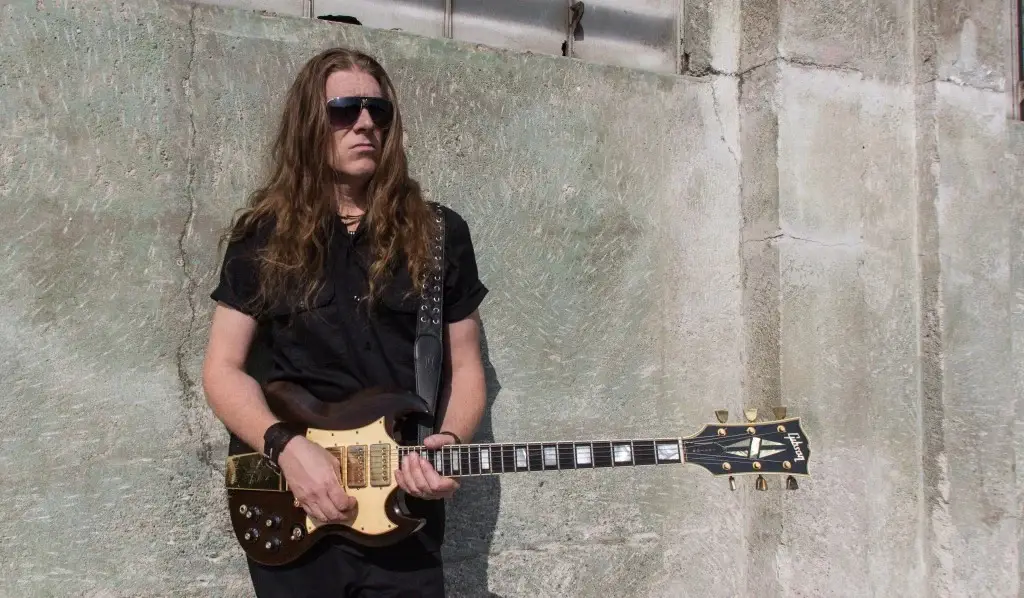
– Andrew Daly (@vwmusicrocks) is the Editor-in-Chief for www.vwmusicrocks.com and may be reached at andrew@vinylwriter.com
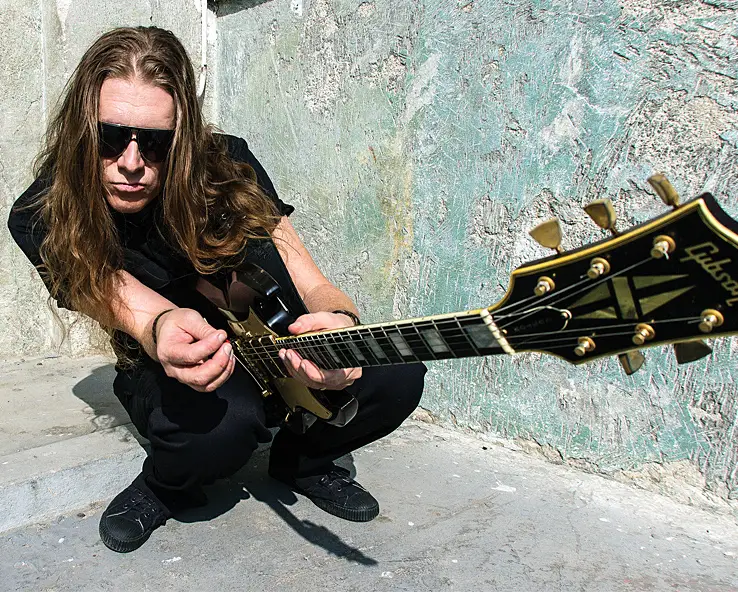
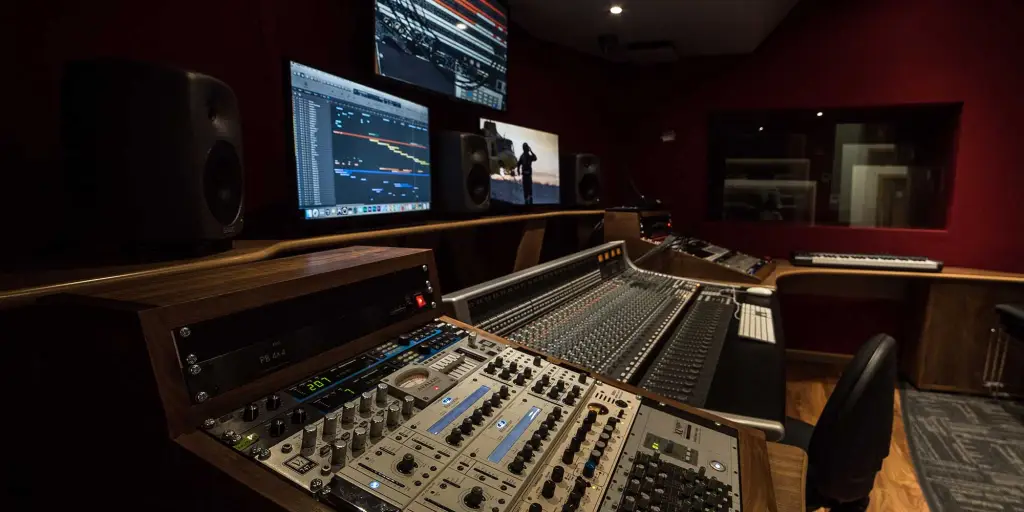

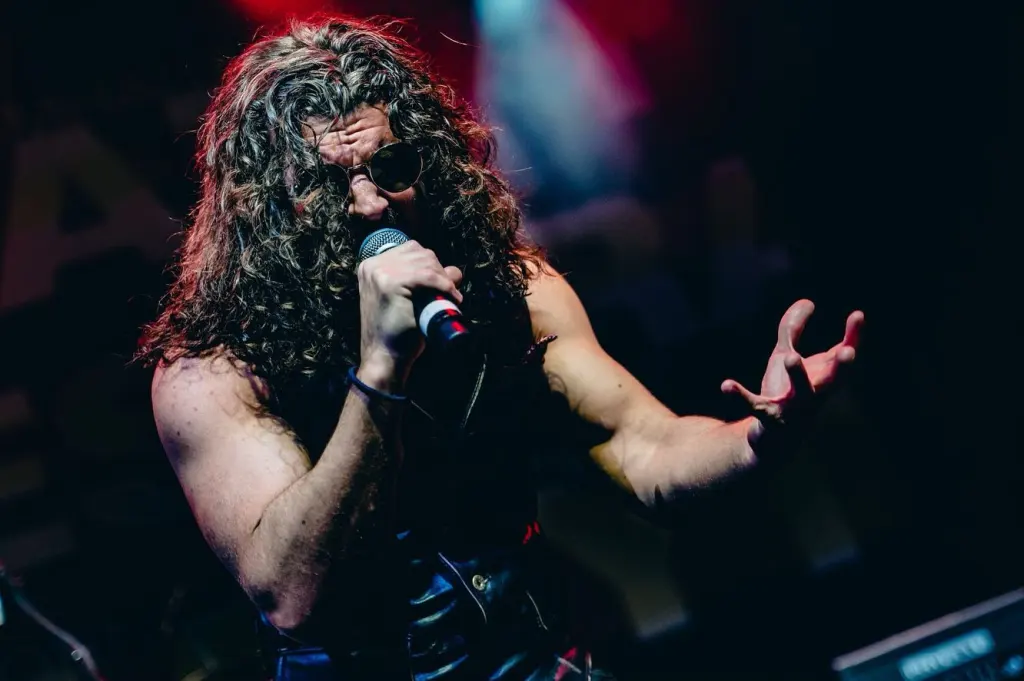
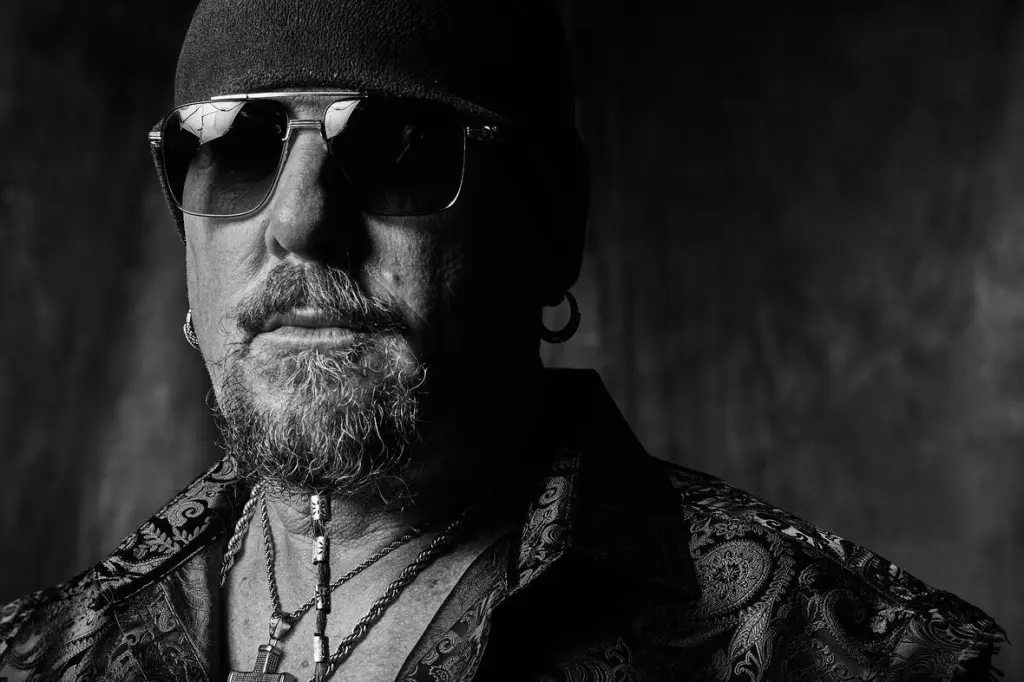
Leave a Reply